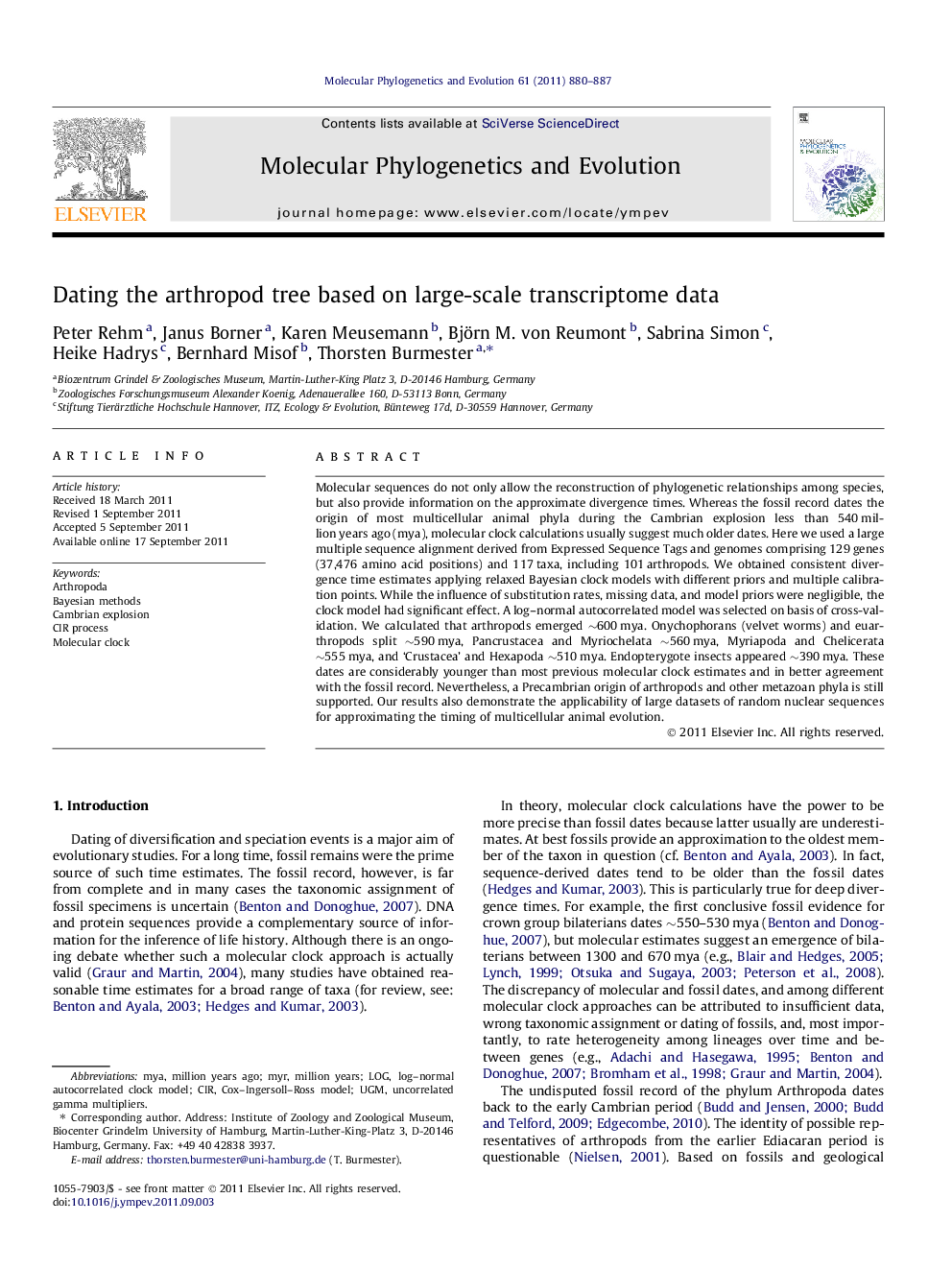| Article ID | Journal | Published Year | Pages | File Type |
|---|---|---|---|---|
| 5920637 | Molecular Phylogenetics and Evolution | 2011 | 8 Pages |
Molecular sequences do not only allow the reconstruction of phylogenetic relationships among species, but also provide information on the approximate divergence times. Whereas the fossil record dates the origin of most multicellular animal phyla during the Cambrian explosion less than 540 million years ago (mya), molecular clock calculations usually suggest much older dates. Here we used a large multiple sequence alignment derived from Expressed Sequence Tags and genomes comprising 129 genes (37,476 amino acid positions) and 117 taxa, including 101 arthropods. We obtained consistent divergence time estimates applying relaxed Bayesian clock models with different priors and multiple calibration points. While the influence of substitution rates, missing data, and model priors were negligible, the clock model had significant effect. A log-normal autocorrelated model was selected on basis of cross-validation. We calculated that arthropods emerged â¼600 mya. Onychophorans (velvet worms) and euarthropods split â¼590 mya, Pancrustacea and Myriochelata â¼560 mya, Myriapoda and Chelicerata â¼555 mya, and 'Crustacea' and Hexapoda â¼510 mya. Endopterygote insects appeared â¼390 mya. These dates are considerably younger than most previous molecular clock estimates and in better agreement with the fossil record. Nevertheless, a Precambrian origin of arthropods and other metazoan phyla is still supported. Our results also demonstrate the applicability of large datasets of random nuclear sequences for approximating the timing of multicellular animal evolution.
Graphical abstractDownload full-size imageHighlights⺠Arthropod divergence times were estimated from ESTs using a Bayesian framework. ⺠Effect of root priors, rates and missing data on estimates were low. ⺠Autocorrelated clock models outperform uncorrelated models. ⺠Divergence time estimates essentially agree with the fossil record. ⺠Arthropods originated in the late Pre-Cambrian period.
